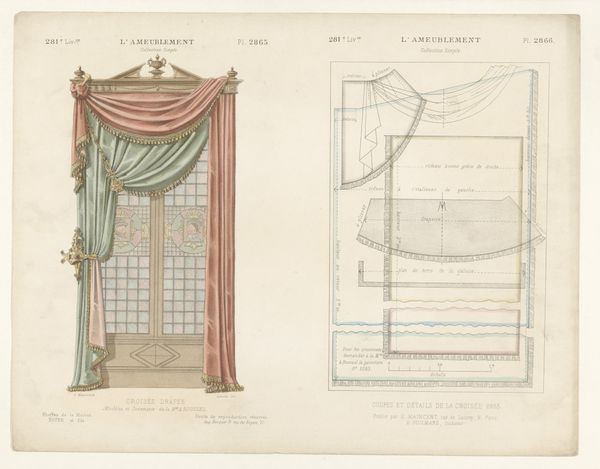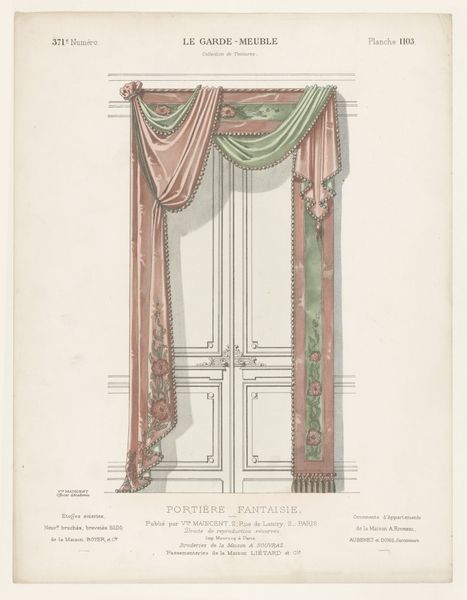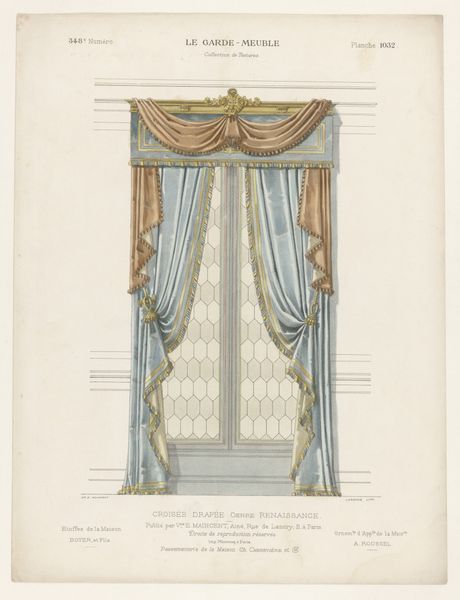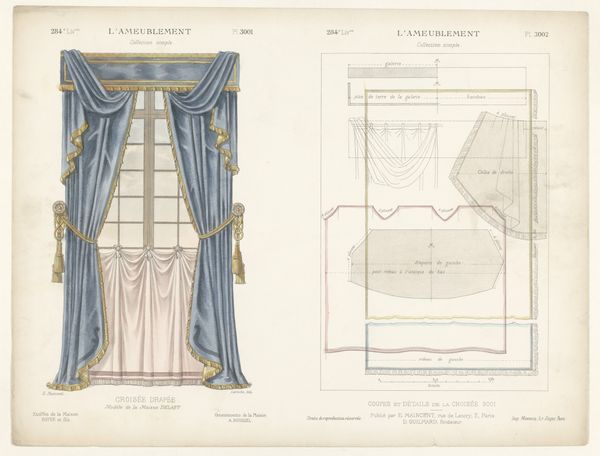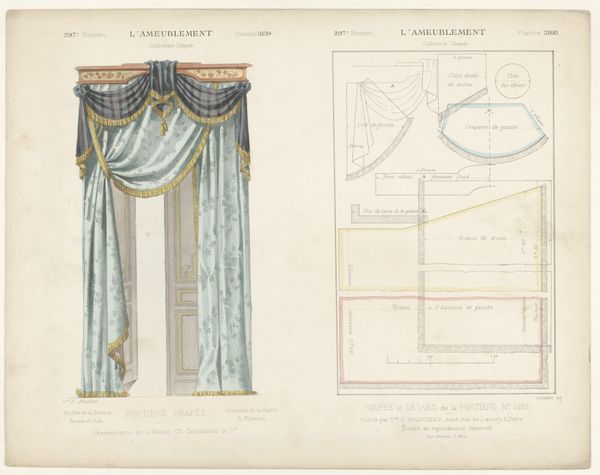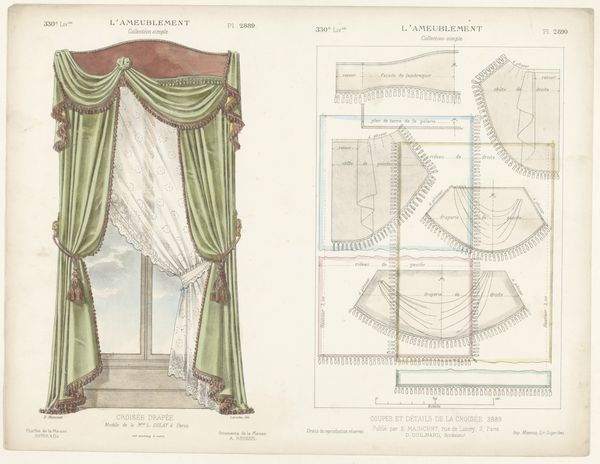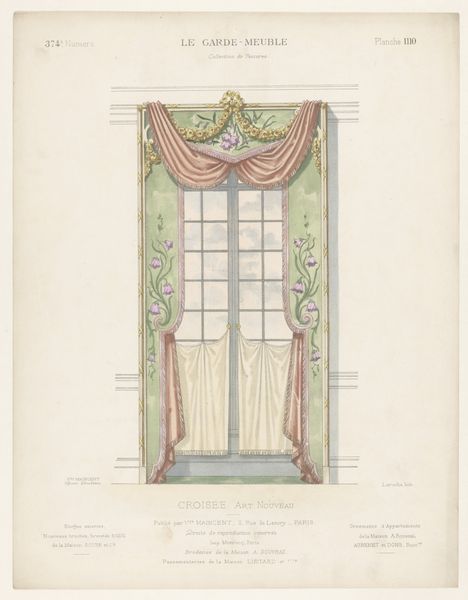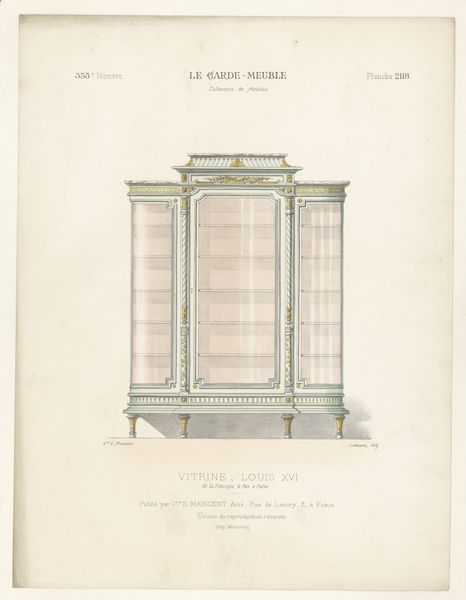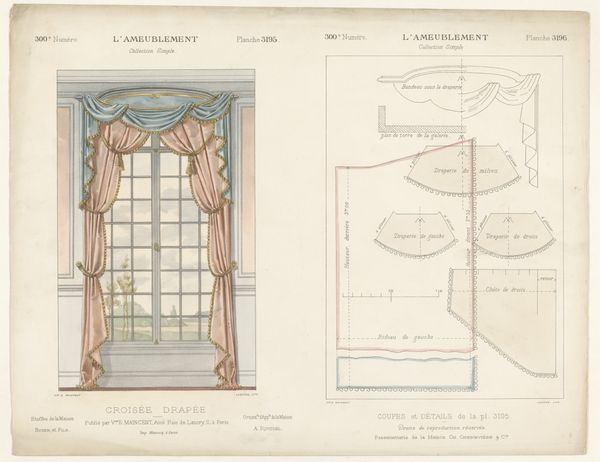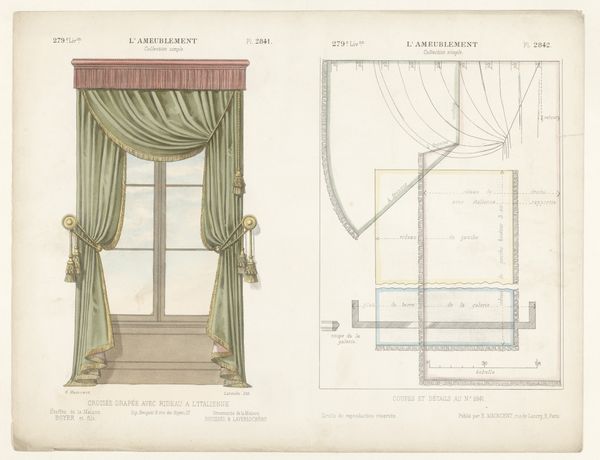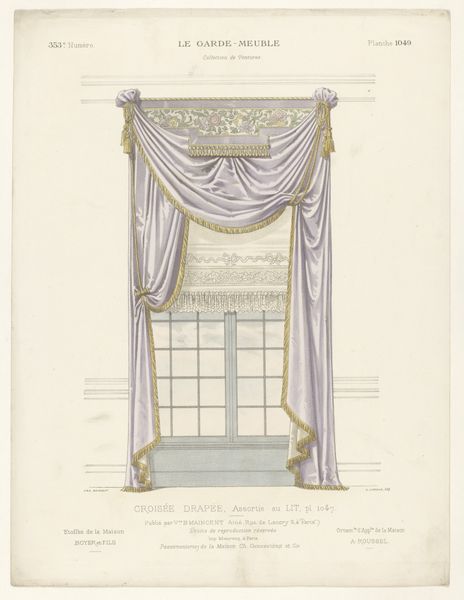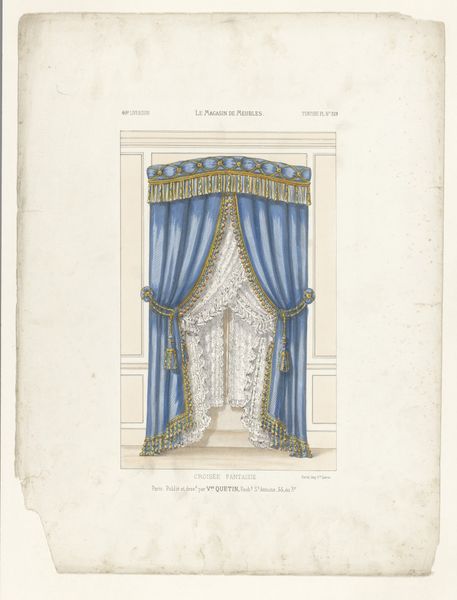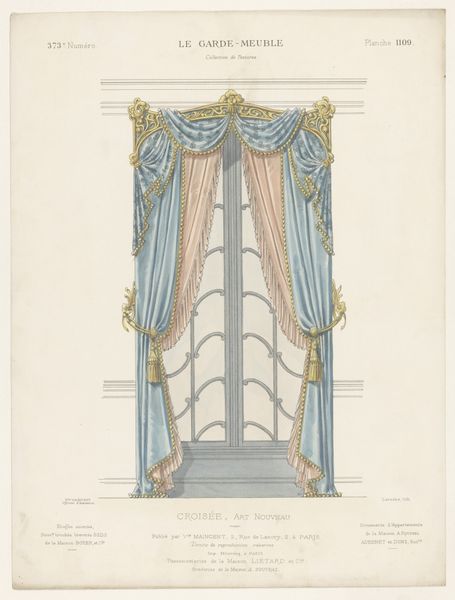
drawing, print
#
drawing
#
art-nouveau
# print
#
decorative-art
Dimensions: height 359 mm, width 274 mm
Copyright: Rijks Museum: Open Domain
Curator: This Art Nouveau print by Léon Laroche from 1895, titled "Raampartij met gordijnen," is just delightful! The pale blues and pinks create such a soothing impression. Editor: Yes, at first glance, I'm struck by its overall sense of bourgeois domesticity. The frilly drapes suggest a world of leisure, far removed from the realities of labor and the social upheaval brewing in Europe at the time. Curator: Absolutely. Note the printing technique, though. It’s an industrial rendering meant to provide precise sewing instructions on a pattern and how to tailor each fold, swag and ribbon, clearly demonstrating an intersection between industry, design, and artisanal labor. Editor: Right. It would be important to investigate further how these patterns were circulated and consumed. Did they reinforce existing class structures by providing aspirational imagery while relying on the underpaid labor of seamstresses? Curator: Most likely, although it depends upon whether a skilled artisan tailored and stitched it for someone who purchased the design or a less-experienced person utilized this industrial schematic as a DIY template. Note that some elements, such as brocades, may be either hand or machine made depending on location and the economic realities. The decorative detailing, while aesthetically pleasing, represents considerable expense and investment of time. Editor: Indeed. It also speaks to gendered expectations around domestic space. These drapes frame not only the window, but also a particular vision of femininity and homemaking, restricting a woman's presence inside. Curator: Interesting, although one could easily read an interest in production design through these materials. Each of these small textile elements creates a new element with varying textural implications—something tactile made purely visible on the printed page. The design emphasizes consumption and aesthetic sensibility through material. Editor: Certainly, but let's not overlook how it functioned within broader social hierarchies. It might appeal to a sense of beauty and refinement, but for whom, at what cost, and perpetuating which stereotypes? These are questions we must always keep in mind. Curator: Good point. In studying the materiality, labor and distribution process involved here, however, one can find a better connection to these difficult questions and begin understanding answers. It all relies upon seeing the full context, of course! Editor: Precisely. It reminds us that even the most seemingly innocuous image can reveal layers of social and historical complexity if we're willing to dig deeper. Curator: Thank you for offering an important view and a refreshing interpretation of the artwork.
Comments
No comments
Be the first to comment and join the conversation on the ultimate creative platform.
